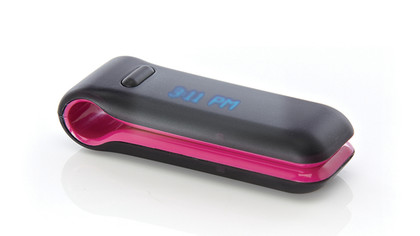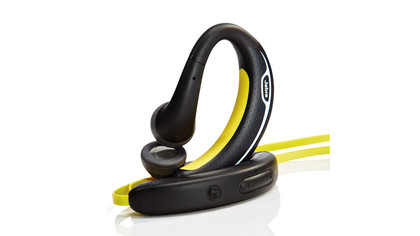How to keep fit with your iOS device
Healthy, happy and fit with your iPhone, iPod Touch or iPad
The caveat, though, is that there were problems with the early models, and while the company acted quickly and did everything right in keeping customers happy, as we write it still hasn't gone back on sale. It's likely to soon, though.
Step it up

While all of these are great ways of passively tracking how much you move around every day, they will, of course, also do a great job of recording your effort if you do decide to step it up and actually go for a run. But there are other options that are specifically designed to be used for running.
There is, of course, the Nike ecosystem, which we'll talk about in its own section later on, and it's worth noting that, though it's much less well known and doesn't have the same heritage as Nike, Adidas also has a similar range of sensors and apps that are worth considering.
You don't have to go for a lock-in with one of the big sportswear companies, though; Scosche, for example, makes the myTREK, a sensor you strap to your wrist that communicates your heart rate to your device over Bluetooth. This information can help ensure you exercise well - not pushing yourself too hard, but not doing so little as to be ineffectual. You can get audio prompts too as you run.
Your iPad, of course, isn't exactly ideal to carry with you on a run, but if you have an iPhone or iPod touch, you can easily strap it to your upper arm with an armband from companies such as Belkin, Griffin and Incase. You can still use the device through the clear plastic covering, but it's protected and securely fastened so that you can just concentrate on running.
The headphones that come in the box with an iPhone or iPod not only don't sound great, but for most of us they fall out of our ears far too easily. Happily, there are plenty of other options. Earphones such as the Iqua Ear-go actually clip on to your earlobes, but we'd prefer something wireless so we can swing our arms freely when running without fear of tangling in a cable and yanking the earphones out.

If you like in-ear headphones, we recommend the Jabra SPORT. They're comfortable, connect over Bluetooth and are rainproof to boot. For over-ears, we still, years on, like the Bluetooth-toting JayBird Sportsband. They fit snugly, and though we get a bit squeamish just writing the words, we appreciate their lifetime warranty against sweat.
Get daily insight, inspiration and deals in your inbox
Sign up for breaking news, reviews, opinion, top tech deals, and more.
Your iPhone can help you with more than just running, mind you. The Wahoo Blue SC Speed and Cadence Sensor for iPhone 4S attaches to a bike to track distance, so you can see how far you've ridden today, last week, ever and so on; the data is passed to your iPhone 4S or new iPad over Bluetooth 4.0 - which is why it won't work with older devices.
Remember: the mere act of recording this data can be a powerful motivator. If you need even more motivation and coaxing, though, you should look at the iBike system, specifically the POWERHOUSE model. That gives you a weather-proof and rugged case for your iPhone that you attach to your handlebars, plus a sensor to measure speed and cadence.
The reason we like this so much, though, is that the accompanying app will calibrate to your level of fitness, then, through a series of training programmes (two are included, with more available as In-App Purchases), it will gradually build you up even from a standing start.
If you've bought a bike with the best of intentions and yet never actually found yourself using the damn thing, the iBike POWERHOUSE is a good way to get yourself using it to improve your fitness levels, without it feeling like you're being punished by a sergeant at boot camp.